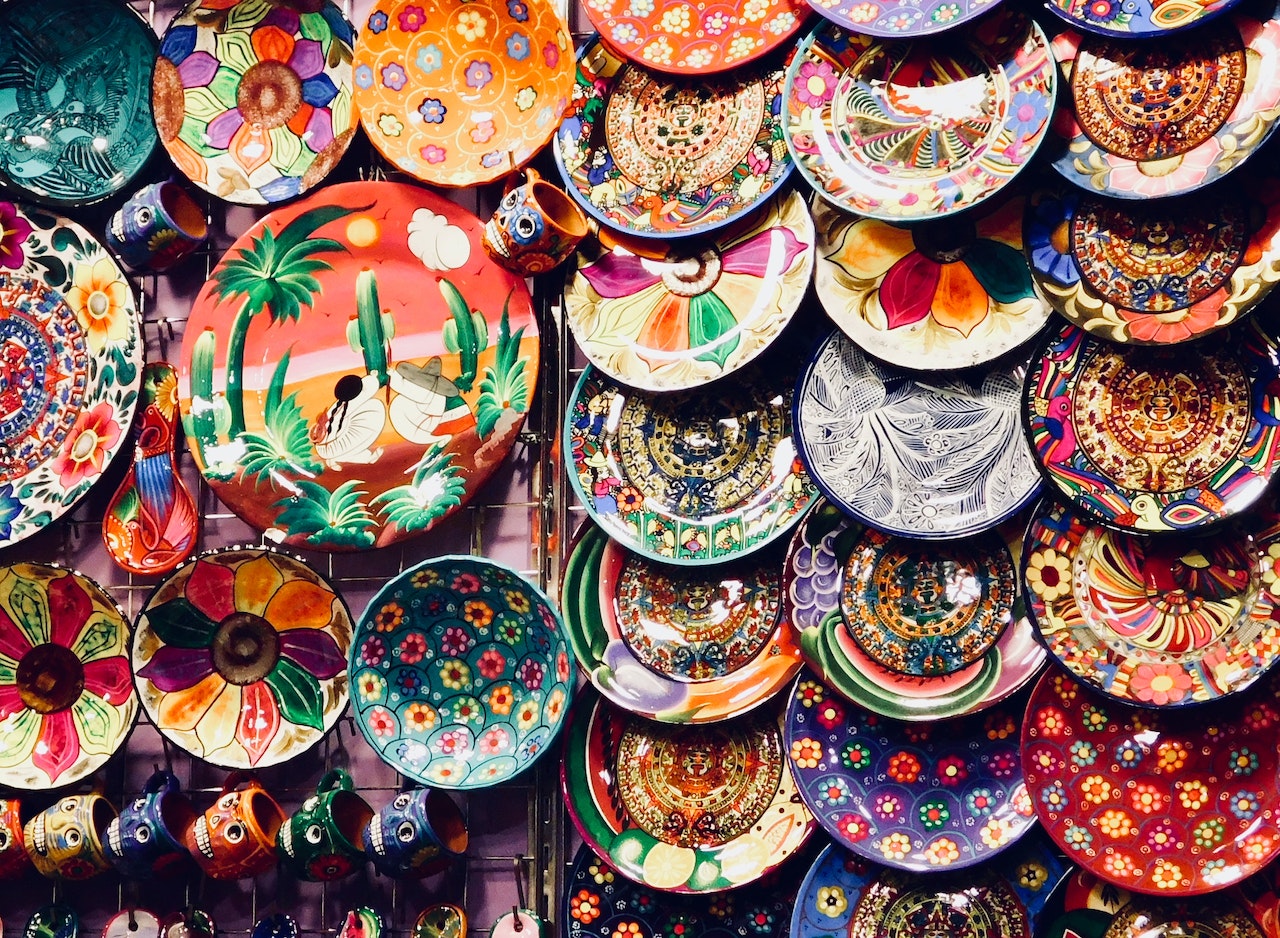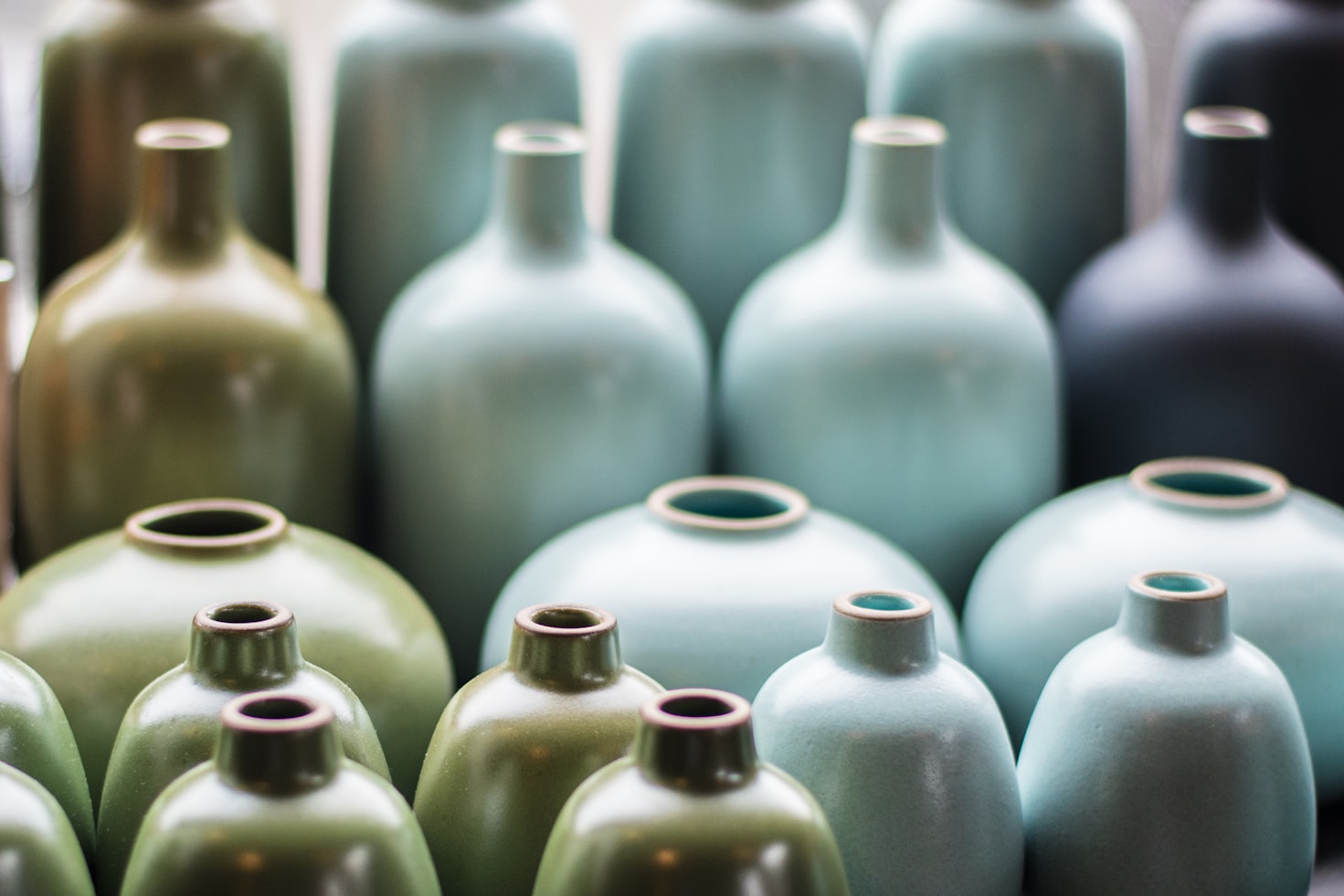Top 25 Fun Facts About Ceramics

Ceramics have been an important part of human history for thousands of years. From ancient pottery to modern engineering materials, ceramics have played a vital role in human civilization. Here are 25 fun facts about ceramics that you might not know.
The History of Ceramics
Ceramics have been around for thousands of years and were first created by ancient civilizations. The oldest ceramic artifacts date back to 24,000 BC and were found in Czechoslovakia.
Ceramics played an important role in various cultures for both artistic and practical purposes. The techniques used in ceramic production have evolved over time, with new discoveries and innovations. Today, ceramics remains an important and diverse field of study and practice.
The Oldest Ceramic Artifacts
The oldest known ceramic artifacts date back to 24,000 BC and were found in Dolni Vestonice, Czechoslovakia. These artifacts were small figurines of animals and humans, made using a simple coiling technique.
The discovery of these artifacts helped researchers gain insights into early human art and culture. Similar ancient ceramic artifacts have been found all over the world, from Japan to Africa and the Americas. The preservation of these ancient artifacts has helped us understand the history and evolution of ceramics.

How Ceramics Are Made?
Ceramics are made through the process of forming, drying, firing, and glazing. The process of forming can be done by hand or with the use of machines and includes techniques like throwing, coiling, and molding. After forming, the ceramics are dried to remove any moisture and then fired at high temperatures in a kiln to make them hard and durable.
Finally, the ceramics can be glazed to add a decorative or functional layer, such as making them more resistant to liquids. The specific techniques and materials used in ceramic production can vary depending on the type of ceramic being made.
The Different Types of Ceramics
Ceramics can be classified into several different categories based on their properties and intended use. Traditional ceramics, such as earthenware, porcelain, and stoneware, are made from clay and other minerals. Advanced ceramics, such as silicon carbide and alumina, are made from non-clay materials and are designed to have specific properties, such as high strength or heat resistance.
Glass ceramics, like Pyroceram, are made by combining glass and ceramic materials and can be used in applications like cookware or windows. Bioceramics, like dental implants or artificial joints, are designed to interact with biological tissues and can be used for medical purposes.
The Properties of Ceramics
Ceramics have a variety of properties that make them useful in different applications. They are typically hard, strong, and stiff, making them good for structural applications. Ceramics are also resistant to high temperatures, wear, and corrosion, and can be made to be insulators or conductors of electricity.
However, ceramics can be brittle and are prone to cracking under stress or impact. The properties of ceramics can be tailored through a careful selection of materials and production techniques.
The Use of Ceramics in Art
Ceramics have been used for artistic purposes for thousands of years, from ancient pottery to modern sculpture. Many cultures have developed unique styles and techniques for ceramic art, such as Chinese porcelain or Greek black-figure pottery.
Ceramic art can take many forms, including functional objects like plates or vases, decorative objects like figurines or sculptures, or even architectural elements like tiles or mosaics. Ceramic artists use a variety of techniques to create their works, such as hand-building, wheel-throwing, or glazing. Ceramic art remains an important and diverse field of contemporary art.
The Use of Ceramics in Everyday Life
Ceramics are commonly used in household items like dishware and tiles due to their durability and ease of cleaning. Ceramics have been used for centuries in everyday life for making household items such as dishes, cups, and tiles. Their durability, heat resistance, and aesthetic appeal make them popular for these purposes.
The Use of Ceramics in Medicine
Ceramics play a vital role in medical applications such as dental implants, bone replacements, and artificial joints. Ceramics are used in medical implants such as dental implants, artificial hips, and bone plates due to their biocompatibility, strength, and resistance to corrosion. They are also used in medical instruments, such as surgical knives and cutting tools.
The Use of Ceramics in Electronics
Ceramics are used in electronic devices, such as capacitors, transducers, and sensors, due to their high dielectric constant, low loss, and thermal stability. They also have good thermal and electrical insulation properties.
The Use of Ceramics in Aerospace
Ceramics are used in aerospace components such as heat shields, turbine blades, and nose cones due to their high-temperature resistance, strength, and lightweight. They can also withstand extreme thermal shock and erosion.
The Use of Ceramics in Energy Storage
Ceramics are used in energy storage devices such as batteries, fuel cells, and supercapacitors due to their high energy density, stability, and low resistance. They are also used in solar cells and hydrogen production.
The Use of Ceramics in Environmental Protection
Ceramics are used in environmental protection applications such as air and water filtration, wastewater treatment, and soil remediation due to their chemical stability, high surface area, and adsorption properties.
The Most Expensive Ceramic Artwork
The most expensive ceramic artwork is a Ming Dynasty vase called the Meiyintang Chenghua “Chicken Cup” which sold for over $36 million in 2014. It is only 8 centimeters in diameter and has intricate paintings of chickens and roosters.
The Largest Ceramic Sculpture
The largest ceramic sculpture is the ceramic dragon sculpture at the Happy Valley Theme Park in Wuhan, China. It is over 57 meters long, 7 meters high, and weighs more than 400 tons.
The Most Famous Ceramic Artists
Some of the most famous ceramic artists include Pablo Picasso, Peter Voulkos, Betty Woodman, and Shoji Hamada. They have created stunning pieces that have become iconic in the art world.
The Most Famous Ceramic Artworks
Some of the most famous ceramic artworks include the Chinese Terracotta Army, the Greek vase known as the François Vase, and the Mexican Day of the Dead skulls. These works have captured the imagination and admiration of people around the world.
The Most Famous Ceramic Museums
Some of the most famous ceramic museums include the Victoria and Albert Museum in London, the Museo Internazionale delle Ceramiche in Faenza, Italy, and the International Museum of Ceramics in Japan. These museums showcase some of the most amazing and important ceramic works from around the world.
The Future of Ceramics
The future of ceramics is bright, as they are being developed for use in new applications such as nanotechnology, biotechnology, and renewable energy. New materials and processes are being developed to make ceramics even stronger, more durable, and more versatile.
The Benefits of Using Ceramics
Ceramics have many benefits, including their strength, durability, heat resistance, and aesthetic appeal. They are also environmentally friendly, as they are made from natural materials and can be recycled.
The Challenges of Using Ceramics
Ceramics can be challenging to work with due to their brittle nature and the difficulty of shaping and firing them. They also require special equipment and techniques for production and fabrication.
The Advancements in Ceramic Technology
New manufacturing processes have made ceramics more versatile, durable, and affordable. Ceramic materials are now used in cutting-edge technologies such as fuel cells, sensors, and semiconductors. Advances in nanotechnology have enabled the creation of ceramic composites with improved mechanical, electrical, and thermal properties.
Ceramic coatings and composites are being used to improve the performance and safety of aircraft and automotive parts. Research in 3D printing has allowed for the creation of intricate and precise ceramic structures with unique properties.
The Innovations in Ceramic Art
Contemporary ceramic artists are exploring new techniques and approaches to traditional forms of pottery and sculpture. Many artists are using ceramics to create installations, mixed media works, and even architectural projects. Digital technologies have allowed for the creation of complex ceramic shapes, textures, and patterns.
Artists are incorporating social and political themes into their work, challenging the idea of ceramics as purely decorative or functional. The use of ceramics in contemporary art continues to evolve, with new forms of expression and experimentation.
The Sustainability of Ceramics
Ceramics are inherently sustainable, as they are made from natural materials that can be recycled and reused. New technologies and manufacturing processes have reduced the environmental impact of ceramic production. The durability and longevity of ceramic products make them a more sustainable choice than many other materials.
Ceramics can be used in sustainable building design, as they have good insulation properties and can be made from local materials. The use of ceramics in sustainable agriculture, water filtration, and other environmental applications is growing.
The Cultural Significance of Ceramics
Ceramics have played a significant role in many cultures throughout history, serving as both functional and decorative objects. Different cultures have their own unique styles and techniques for making ceramics, which reflect their history, values, and aesthetics.
Ceramics are often used to commemorate important events or occasions in a culture, such as weddings, births, or religious ceremonies. Many cultures have stories, myths, and legends that feature ceramics, such as the tale of the Chinese terra-cotta warriors. The study and preservation of ceramic artifacts and techniques is an important part of cultural heritage and history.
Conclusion
Ceramics are an incredibly versatile and important material that have been used for thousands of years. From ancient pottery to modern engineering materials, ceramics have played a vital role in human civilization. With continued advancements in technology, the future of ceramics looks bright, and they will likely continue to be a crucial material in many different fields.





